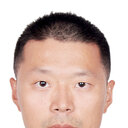[Subclassification of seronegative type 1 diabetic subjects with HLA-DQ genotypes].
キーワード
概要
OBJECTIVE
To reveal the relationship between disease phenotype and HLA-DQ genotype in autoantibody-negative type 1 diabetics and to explore whether HLA-DQ genotypes can reclassify seronegative type 1 diabetic patients.
METHODS
Sixty-one diabetics with unprovoked ketosis or ketoacidosis at presentation were tested for glutamic acid decarboxylase antibody (GAD-Ab), tyrosine phosphatase antibody (IA2-Ab), thyroglobulin antibody (TGA), thyroid peroxidase antibody (TPO-Ab) and HLA-DQ genotype. GAD-Ab and IA2-Ab were measured with radioligand assay. TGA and TPO-Ab were evaluated using RIA. Sequence-based genotyping (SBT) was used to determine the alleles of HLA-DQA1 and DQB1. Autoantibody negative patients were subdivided into group A (with type 1 diabetes susceptible alleles) and group B (without type 1 diabetes susceptible alleles). Clinical characteristics, including age, sex, mode of presentation, body mass index (BMI), islet beta-cell function and current treatment were compared between the autoantibody-positive and autoantibody-negative patients and between group A and B.
RESULTS
Among the 61 patients, 29 (47.5%) were negative for all the antibodies tested, while 31 (50.8%) were positive for one or more antibodies tested. 5 (8.2%) were positive for all those 4 antibodies. As for genetic analysis, 18 of the 29 seronegative patients carried 1-4 HLA-DQ risk alleles, while the other 11 did not carry any type 1 diabetes susceptible alleles tested. As compared with the autoantibody-negative patients, younger age at onset, less obesity, severer degree of diabetic ketoacidosis (DKA) and lower C peptide were found in the autoantibody-positive ones. As compared with group B, less obesity [BMI: (22.4 +/- 4.4) kg/m(2) vs (25.8 +/- 3.7) kg/m(2), P = 0.03], severer degree of DKA [CO(2)CP: (16.3 +/- 7.1) mmol/L vs (19.2 +/- 2.0) mmol/L, P = 0.01; pH: 7.26 +/- 0.20 vs 7.34 +/- 0.06, P = 0.03], and lower C peptide [fasting C peptide: (254.6 +/- 189.4) pmol/L vs (458.7 +/- 274.1) pmol/L, P = 0.06] were observed in group A. During follow-up, 73% (8/11) patients in group B discontinued insulin therapy and maintained acceptable glycemic control by either diet or oral hypoglycemic agents (OHA), while only 28% (5/18) of the patients in group A discontinued and maintained control with OHA (28% vs 73%, P < 0.01). Among those who kept on using insulin, group A patients required higher insulin dosage than those of group B [(0.43 +/- 0.16) U x kg(-1) x d(-1) vs (0.24 +/- 0.18) U x kg(-1) x d(-1), P = 0.07].
CONCLUSIONS
Autoantibody-negative diabetics, if with susceptible HLA-DQ genotypes, presented more type 1A-like features, implying possible existence of as yet unidentified immunologic abnormalities in these patients. HLA-DQ risk genotypes may reclassify seronegative type 1 diabetics. Those who are autoantibody negative but carry susceptible HLA-DQ genotypes, should not be diagnosed as type 1B diabetes.


